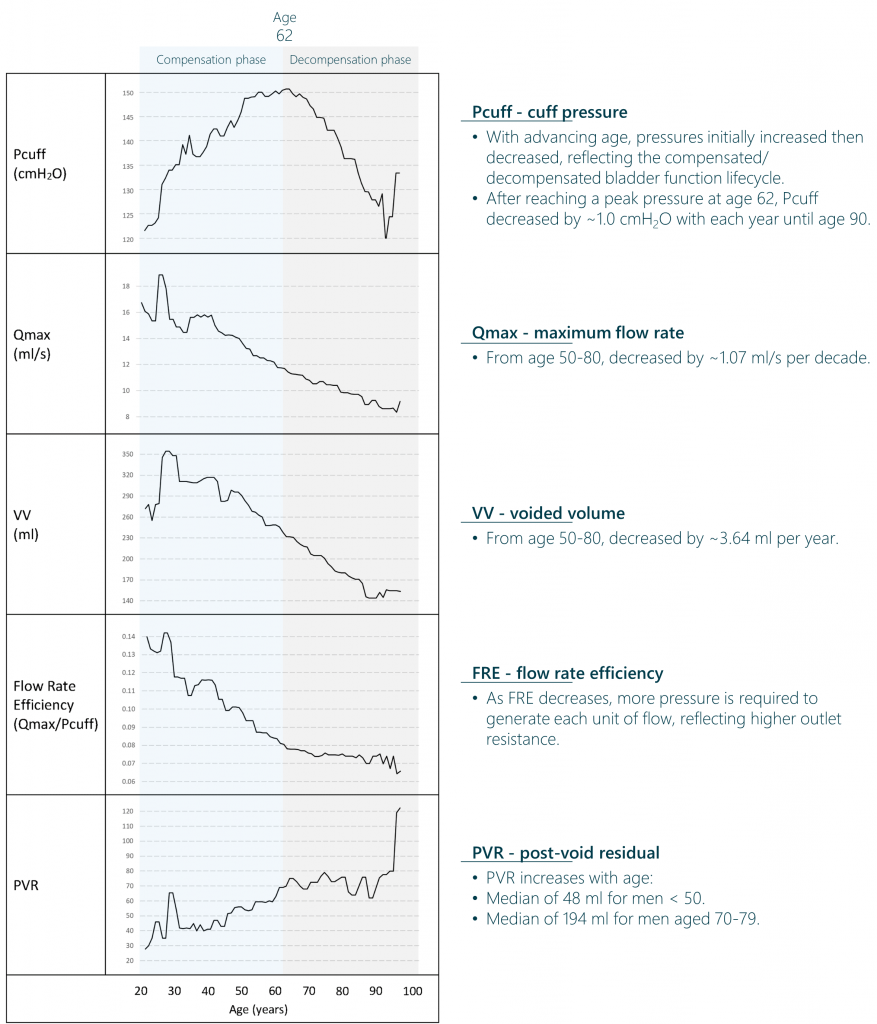The Journal of Urology has published a study on bladder function in male LUTS patients using The UroCuff Test. The authors analyzed UroCuff Test data from 50,680 patients, performed at 103 clinical sites across the US. The publication assessed the voiding characteristics of men with LUTS.
This landmark study documents the deterioration in urodynamic function with age and supports the expansion of diagnostics in LUTS management described in the AUA BPH Guidelines1 and in the UroGPO BPH Clinical Guideline2.
Key takeaways:
- This is the largest LUTS patient population studied in the history of urology.
- All five urodynamic measures in the study deteriorated with age, reflecting the bladder function lifecycle and the urodynamic penalties of delayed BPH intervention.
- With advancing age, on a population basis, bladder pressure initially increases, peaks at age 62, and then decreases when entering the bladder decompensation phase.
- The study findings are in line with recent updates to UroGPO clinical guidelines recommending the use of pressure-flow studies in the BPH clinical pathway.
The table below (Table 3. NNN quadrant vs age cohort) shows the relationship between age and obstruction category:

Figure below summarizes the relationship between patient age and PFS results (from the Results section: Figure 5. PFS results by age, moving average over 3 years).

Download the full publication:
Additional Resources – Webinar with the authors
2021 AUA – SoBPD Meeting – Dr. Toby Kohler – UroCuff: What, How and Why
UroGPO Webinar – Dr Sankar Kausik – 2020 UroCuff Study
2020 UroGPO National Conference – Dr Gregg Eure – 2020 UroCuff Study
References:
1. Management of Lower Urinary Tract Symptoms Attributed to Benign Prostatic Hyperplasia: AUA Guideline
2. BPH Clinical Guideline – UroGPO Medical Advisory Group

